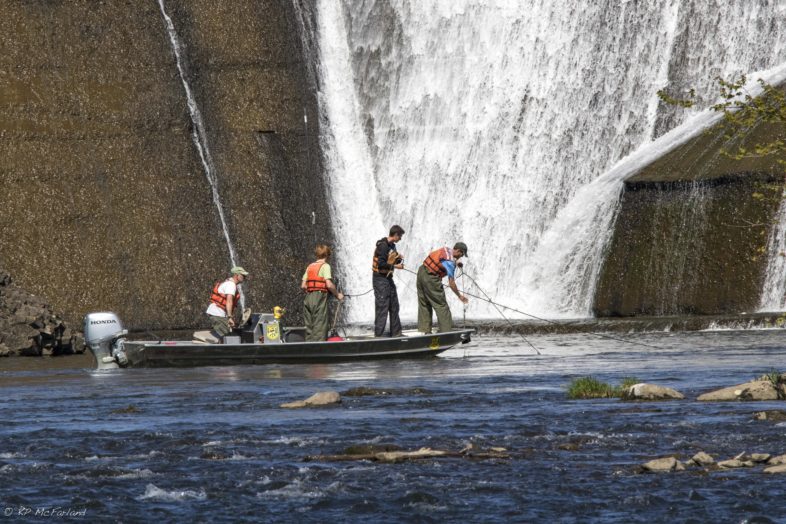
Chet MacKenzie and his team pulling nets in the ‘Sturgeon hole’ below Peterson Dam. © K.P. McFarland
In this edition of Outdoor Radio, VCE biologists Kent McFarland and Sara Zahendra join Chet MacKenzie from the Vermont Fish and Wildlife Department to learn how biologists are trying help Lake Sturgeon thrive once again.
Lake Sturgeon are the largest and longest living fish found in Vermont and are only present in Lake Champlain and its major tributaries. They belong to an ancient family of fishes and have been described as ‘living fossils’. They’ve survived hundreds of thousands of years, but their successful natural history strategies can also be a modern problem. They can live to be 150 years old and weigh up to 300 pounds, but it can take them years to become mature enough to spawn, and then only intermittently.
Lake Champlain once supported a small commercial fishery for Sturgeon in the late 1800s and early 1900s. But annual harvests declined rapidly in the late 1940s and the commercial fishery was closed in 1967. Just a few years later, in 1972, the lake sturgeon was classified as endangered. The decline in lake sturgeon abundance in Lake Champlain has been attributed to over-fishing, habitat loss in the rivers that were used as spawning and nursery grounds, and the introduction of non-native species. Lake sturgeon are now rarely seen during fisheries assessments on Lake Champlain and its tributaries. But Sturgeon still migrate to the Missisquoi, Lamoille, and Winooski rivers to spawn, although the number of spawning adults in each of the rivers is small. But over the past several years, there have been some encouraging signs that they may be doing better now.
Listen to the show
Learn more about Lake Sturgeon
- View the 2015 Field Season Report from the Vermont Fish and Wildlife Department
- Read about how a new tagging project helps biologists track the endangered species
- Find out how anglers are reminded of Lake Sturgeon protection
- Read the Lake Champlain Lake Sturgeon Recovery Plan
Images from the Show
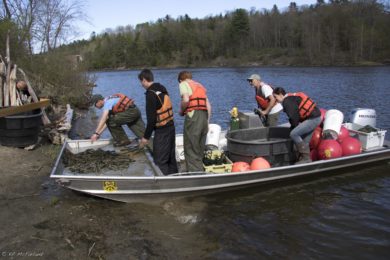
The team springs into action when they arrive with a Lake Sturgeon they just captured on the River. © K.P. McFarland
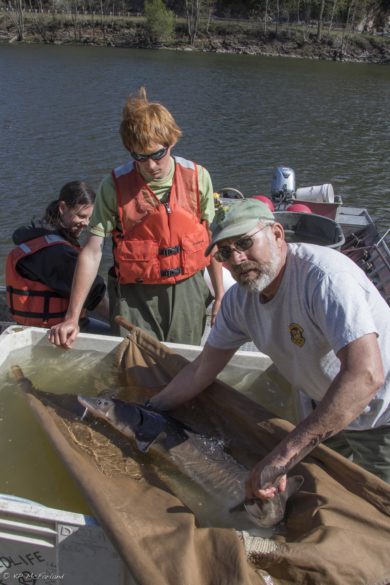
Chet MacKenzie carefully moves the Lake Sturgeon from the boat to a large tank on land. © K.P. McFarland
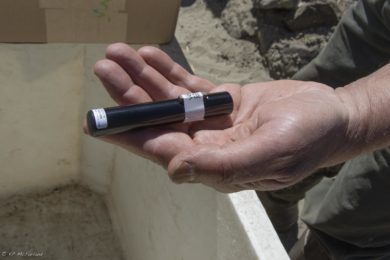
A acoustic tag is turned on and tested before it is inserted in the fish. It will last for up to 10 years, allowing the biologists to follow the fish and learn where and what they need throughout the years. © K.P. McFarland
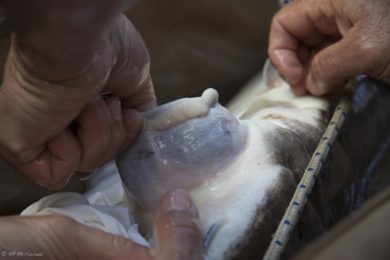
The fish is actually kept relaxed and calm by stroking the roof of its mouth. Here one of the biologists prepares to insert his thumb giving us the opportunity to see the unique mouth structure these fish have for feeding on the lake bottom. © K.P. McFarland
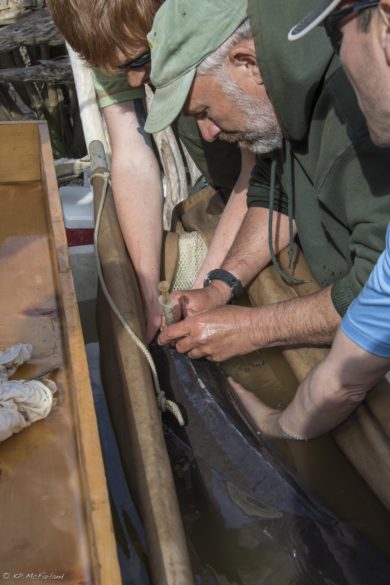
A tiny electronic tag called a PIT tag is inserted under the skin of the fish so that it can be identified with a handheld reader any time it is recaptured. © K.P. McFarland
Outdoor Radio is produced in collaboration with Vermont Public Radio with support from the Windham Foundation. The program was recorded and produced by VPR’s Chief Production Engineer Chris Albertine.
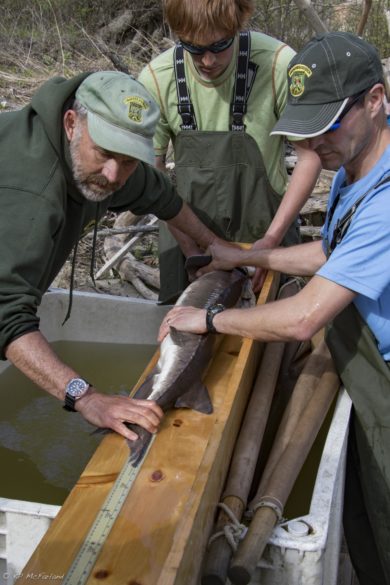
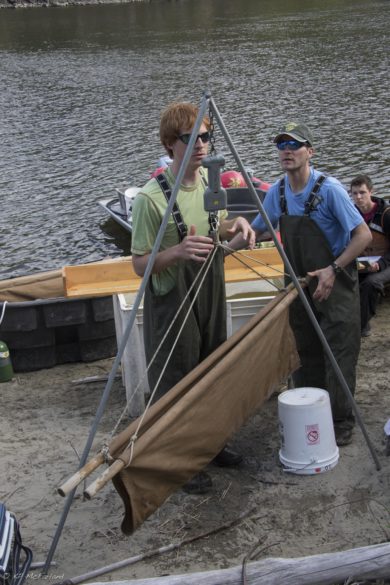
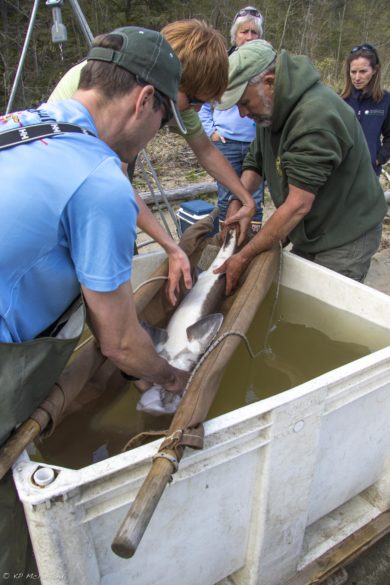

Nicely done Kent and Sara. Combines especially well with the web photos. What an interesting creature. Who doesn’t want to know more about 100 year old big fish that live in Vermont? Thanks, Ted Jastrzembski
Thank you Ted. It is so fun getting the word out about all these great conservation biology projects. I am so glad you are enjoying them.
An update:
The fish that was tagged on the show left the river the next day at 1130pm and headed out into the lake. It’s breeding season is over. Chet and his team can now track it around the lake to see what habitats it is using and how far it will go.
Chet seems to still be hard at work with VT fish and wildlife